AI Summary
Would you like to improve email delivery for your WordPress site using SMTP2GO? This reliable service integrates seamlessly with our WP Mail SMTP plugin to help ensure your website’s emails reach your users’ inboxes.
This tutorial will show you how to set up the SMTP2GO mailer in WP Mail SMTP.
In This Article
What is SMTP2GO?
SMTP2GO is a reliable email delivery service that helps businesses and website owners send emails successfully. By using SMTP2GO with WP Mail SMTP, you can improve the chances of your WordPress site’s emails reaching recipients’ inboxes.
- Cost: SMTP2GO offers a free plan that allows you to send up to 1,000 emails per month. Paid plans are available for higher volume needs, starting at $10 per month for 10,000 emails.
- From Email Requirements: Works with any email address, including your own domain-specific email (e.g., [email protected]).
- Bottom Line: SMTP2GO is a reliable and scalable option for improving email deliverability. It offers a generous free tier and is suitable for both small and large websites.
Note: For more information about other available mailers, please check out our complete guide to mailers in WP Mail SMTP.
Configuring Your SMTP2GO Account
To get started with SMTP2GO, you’ll need to create an account and verify your sender domain. This process involves signing up for a plan and adding DNS records to authenticate your domain.
Creating Your SMTP2GO Account
To begin, head to SMTP2GO’s Pricing page to review the available options. We’ll be using the Free Plan option, but the setup process will be the same regardless of which one you select.
Once you’ve chosen your plan, click on the Get Started button to create an account.
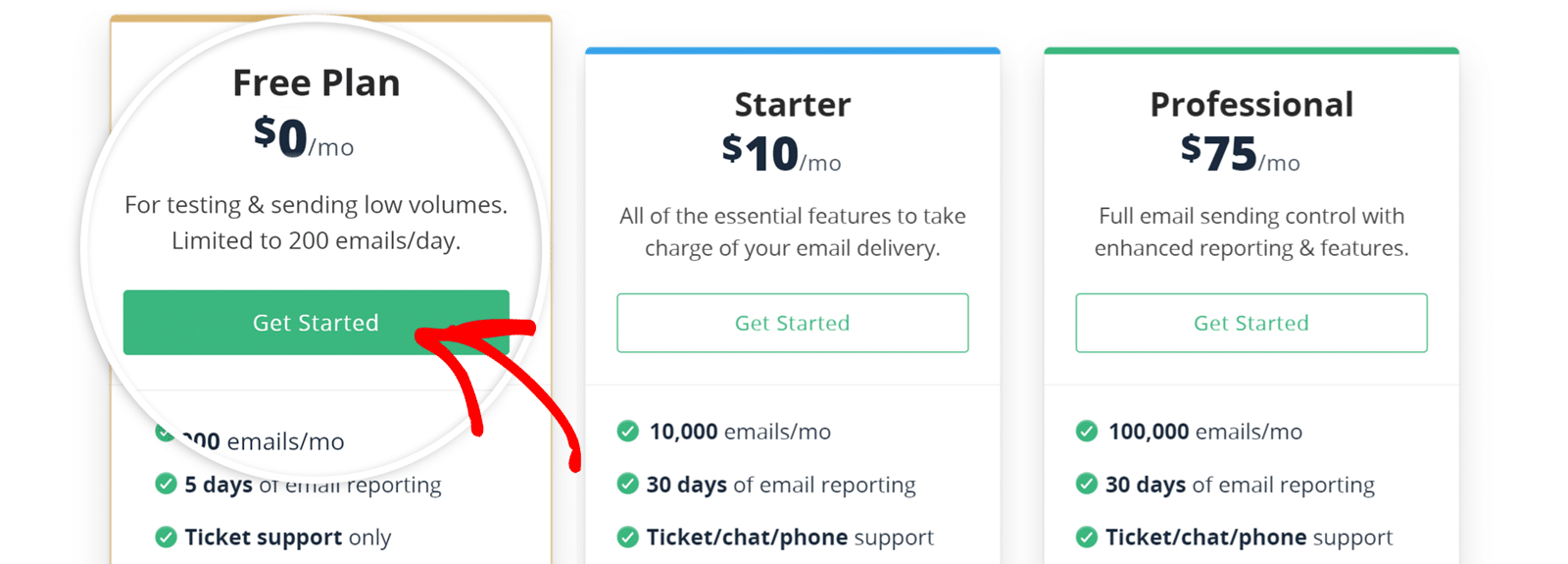
Once you enter your email address, you’ll need to check your inbox for a message from SMTP2GO. In that email, click on the ACTIVATE ACCOUNT button.
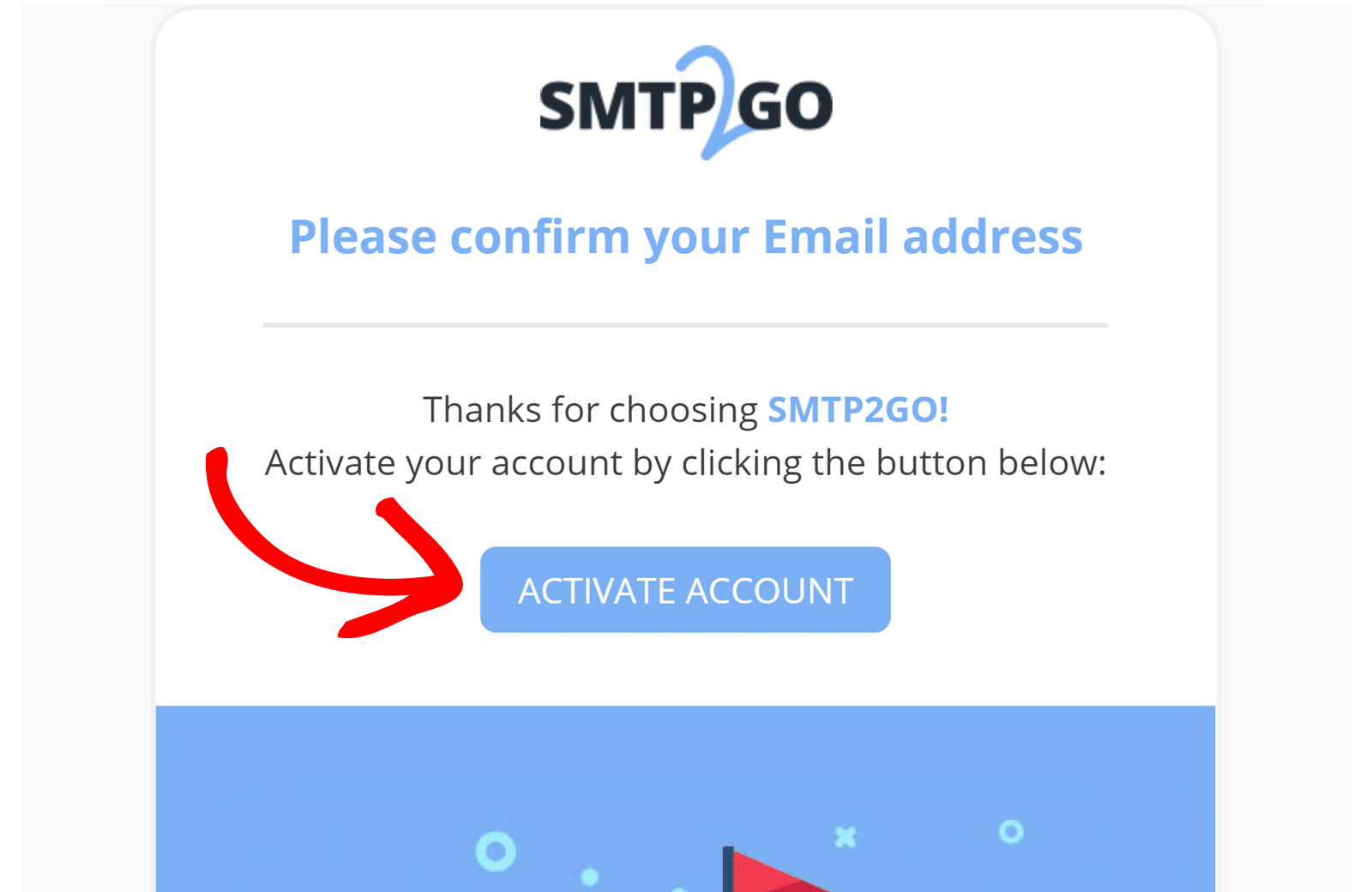
Complete your account registration by entering your name and setting up your password. After submitting this information, you’ll be directed to your SMTP2GO dashboard.
Adding Your Verified Sender
Now that your account is set up, the next step is to add and verify your sender domain. In your SMTP2GO dashboard, navigate to Sending » Verified Senders.
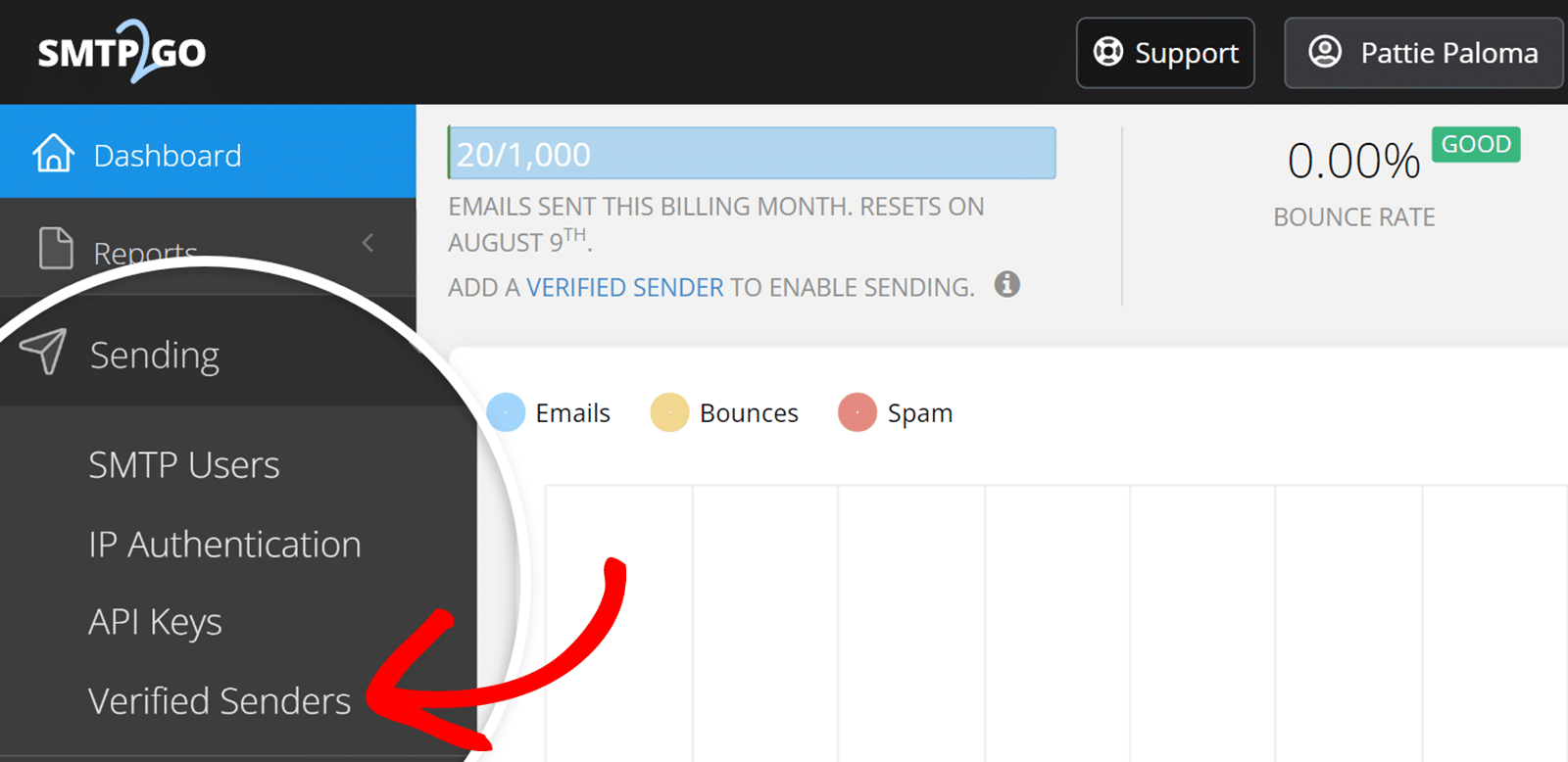
From there, click on the Add a sender domain button.
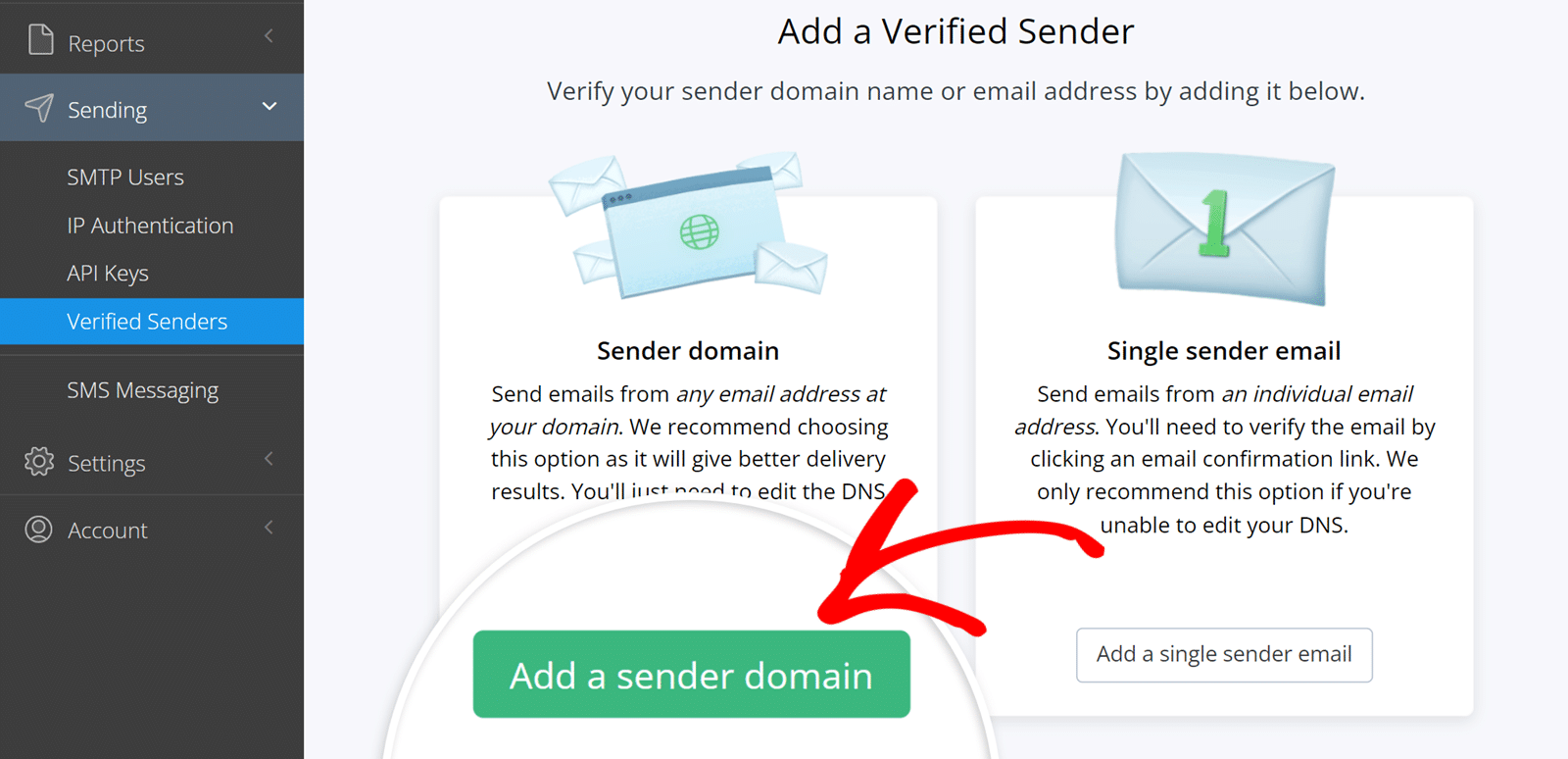
You’ll then be prompted to enter the domain you’d like to add. This should be the domain you want to send emails from. Enter your domain in the field provided and click the Continue with this domain button.
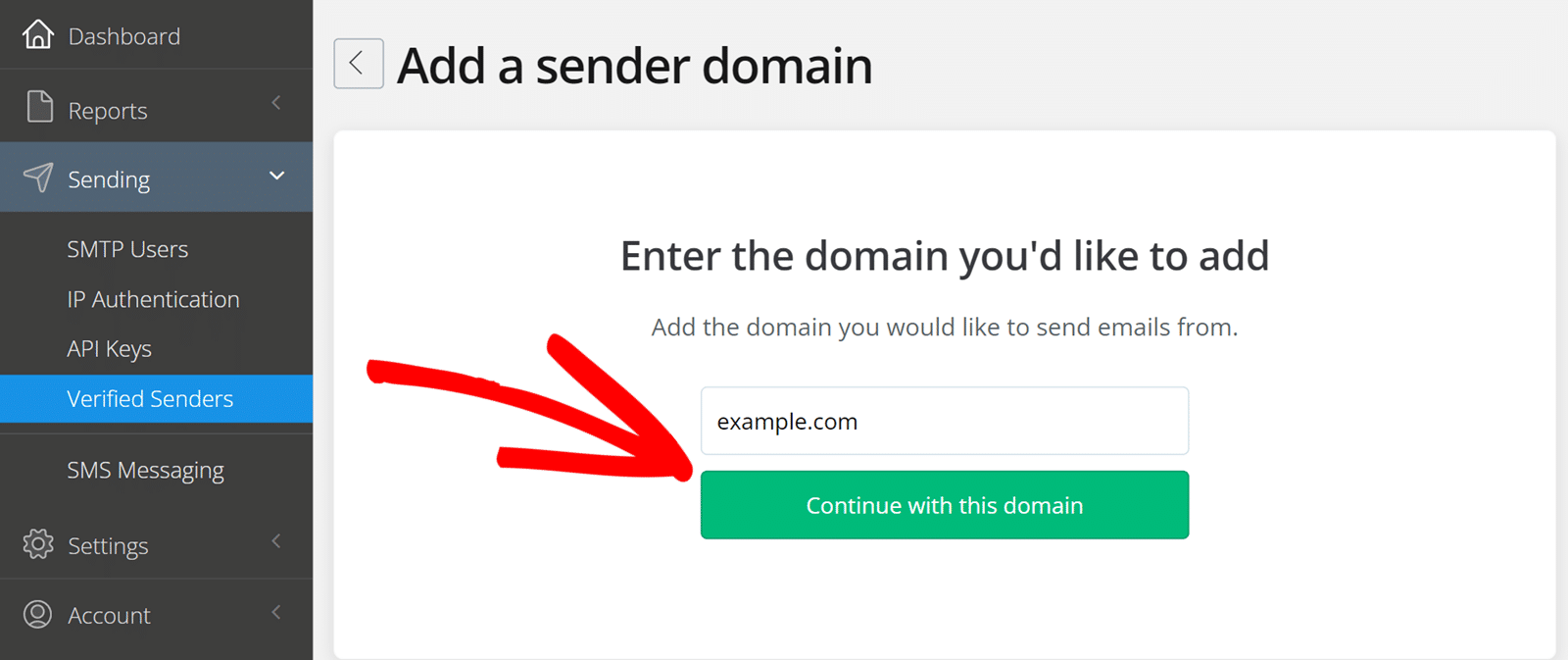
Adding DNS Records
After confirming your domain, SMTP2GO will then provide you with three CNAME records that you need to add to your domain’s DNS settings. This process of authorizing your domain by adding these records is crucial for protecting site owners and their visitors, and has become increasingly important for ensuring reliable email delivery.
To add these records, you’ll need to open a new browser tab or window. Then log in to the service where you purchased your site’s domain (which is most often your site’s hosting provider) and locate your site’s DNS settings.
Note: If you’re not sure where to find your site’s DNS settings or feel unsure about making changes, please contact your site’s hosting provider before making adjustments.
Or, for more details on modifying your site’s DNS, you can check out our guide to adding DNS records for SMTP setup.
Once you’ve accessed your DNS settings, look for an option to add a new record. You’ll need to add the three CNAME records provided by SMTP2GO. Be sure to copy them carefully, as you’ll need the exact values from your SMTP2GO account for the verification to work.
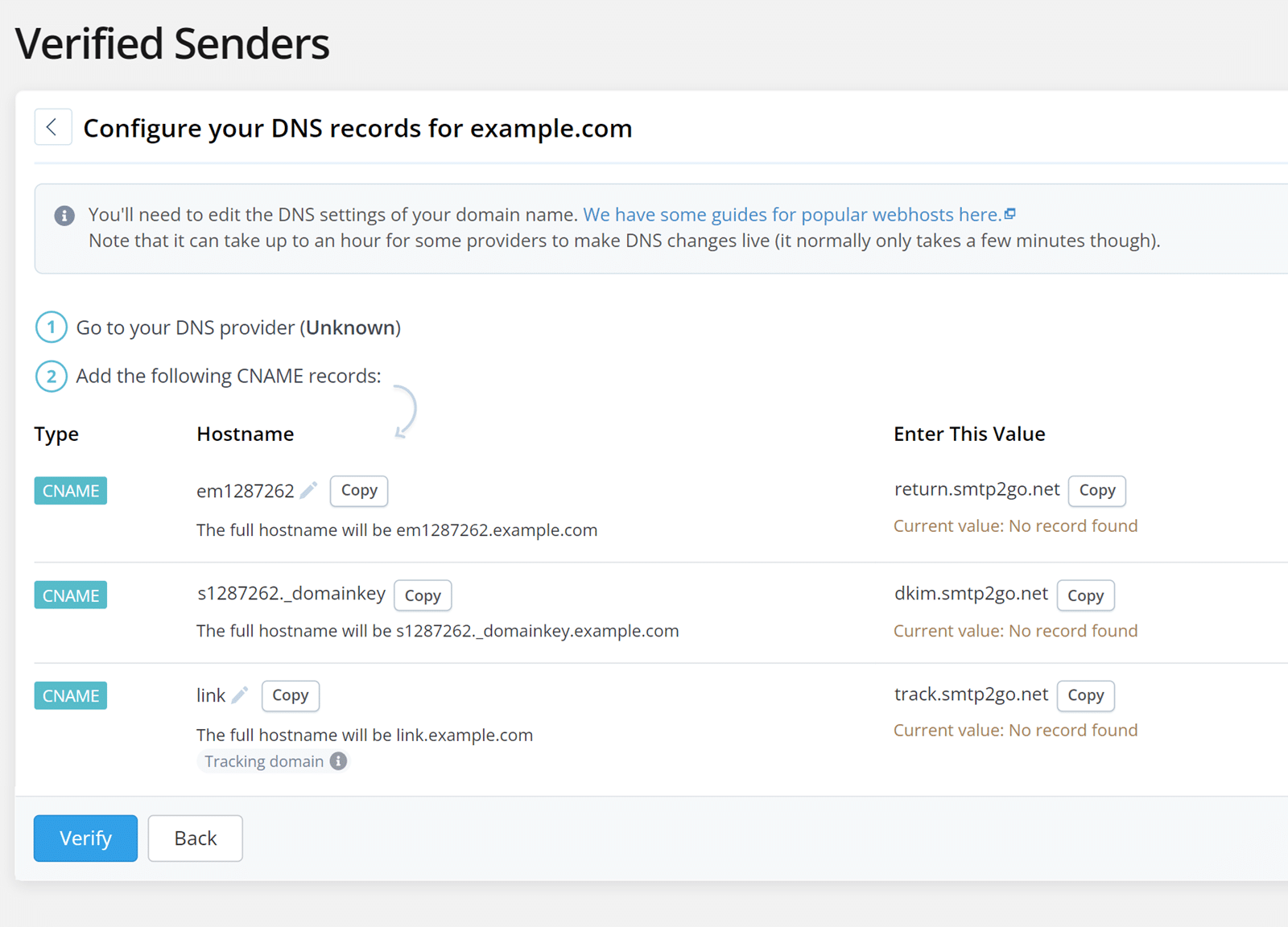
Verifying Your DNS Records
After you’ve added these records, it can take up to 24-48 hours for them to propagate so that SMTP2GO can verify them. However, in some cases, these records can be verified much more quickly. You can go ahead and try clicking the Verify button as a quick test.
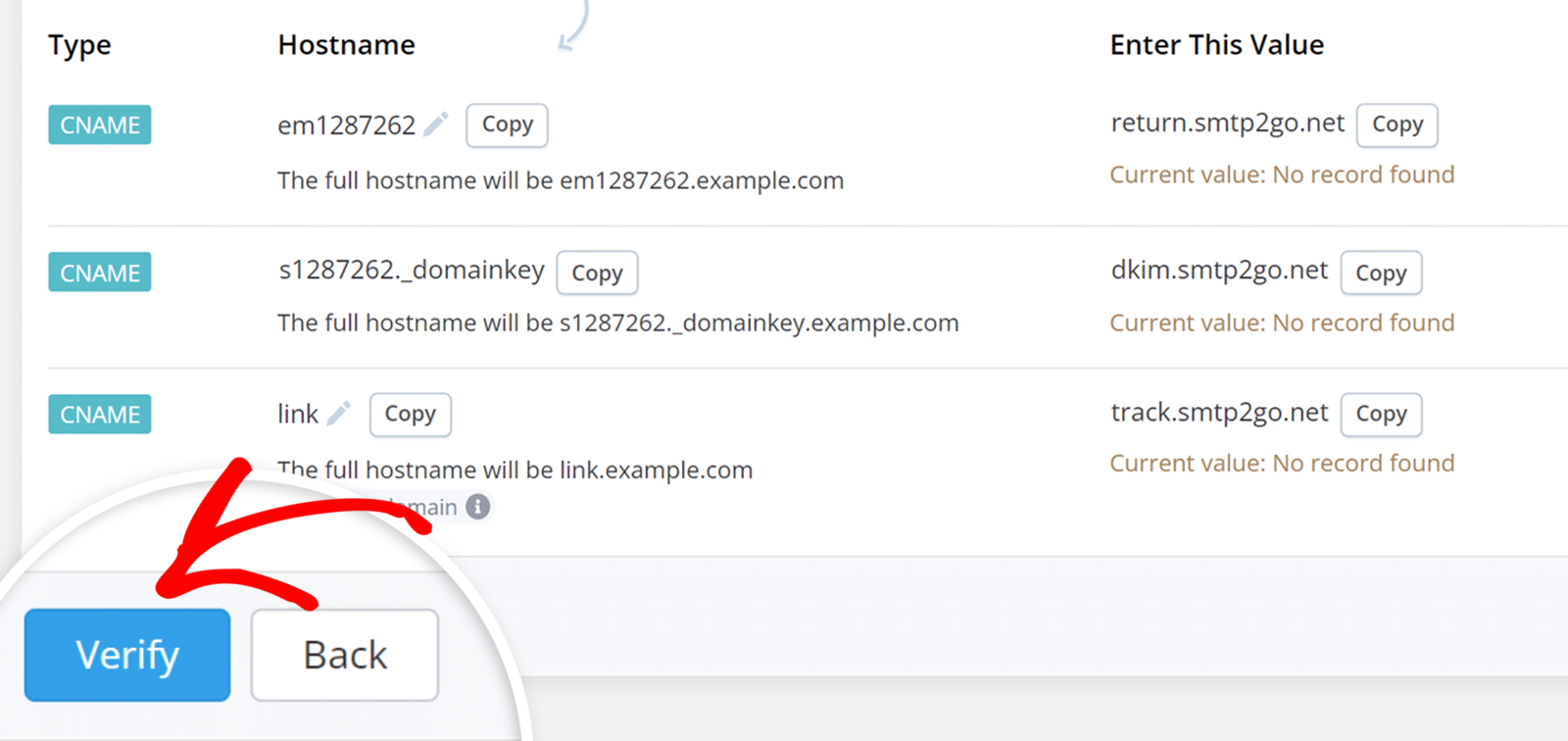
However, there’s no need to wait on this right now! You can move ahead to the next step while you wait for this verification to complete. Just be sure to keep this tab or window open, as you’ll need it a little later.
Setting Up WP Mail SMTP
In this next step, we’ll switch over to setting up WP Mail SMTP.
Before you get started on this section, be sure to install and activate the WP Mail SMTP plugin.
Once WP Mail SMTP is installed, you’ll need to go to WP Mail SMTP » Settings » General to open the plugin settings page.
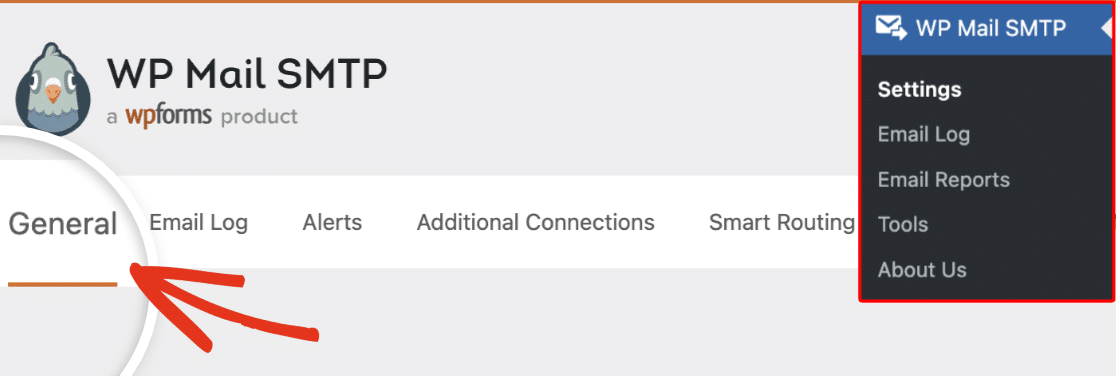
We’ll discuss each of these settings in detail below.
From Email
The From Email is the email address that all of your site’s emails will be sent from. This email address must contain the same domain you authorized in SMTP2GO.
For example, if you authorized example.com, the From Email address must contain example.com (e.g. [email protected]).
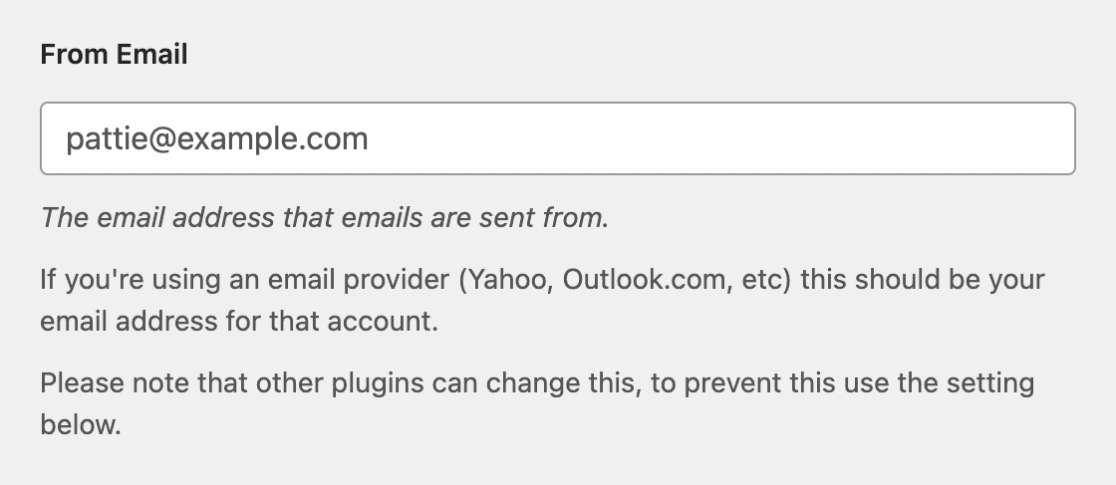
You can also choose to check the box labeled Force From Email. If you’d like the From Email to be the same site-wide, this option will save you the trouble of editing the email settings throughout your site, such as in other plugin settings.

From Name
The From Name will, by default, be set to your site name. However, you can change this to any text you’d like.
You can also choose to enable the Force From Name option to apply this setting to emails site-wide.
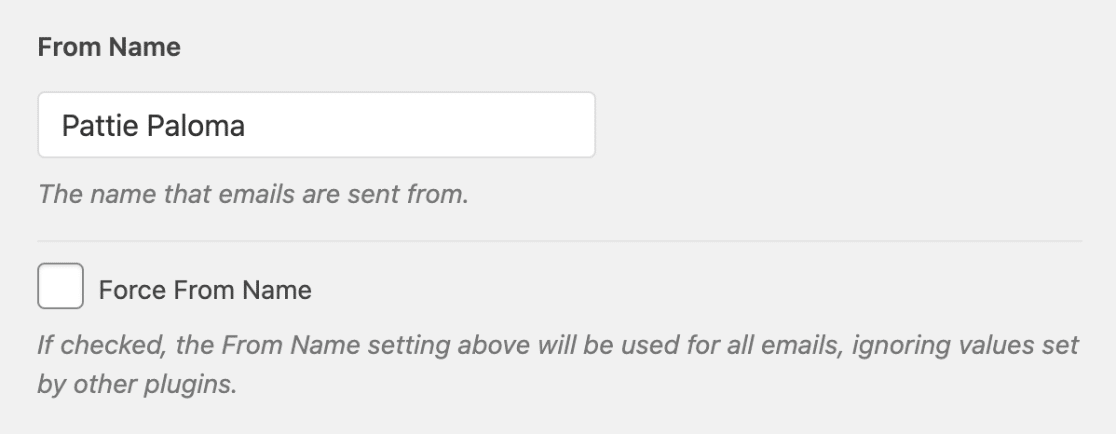
Mailer
In the Mailer field, select the SMTP2GO option.
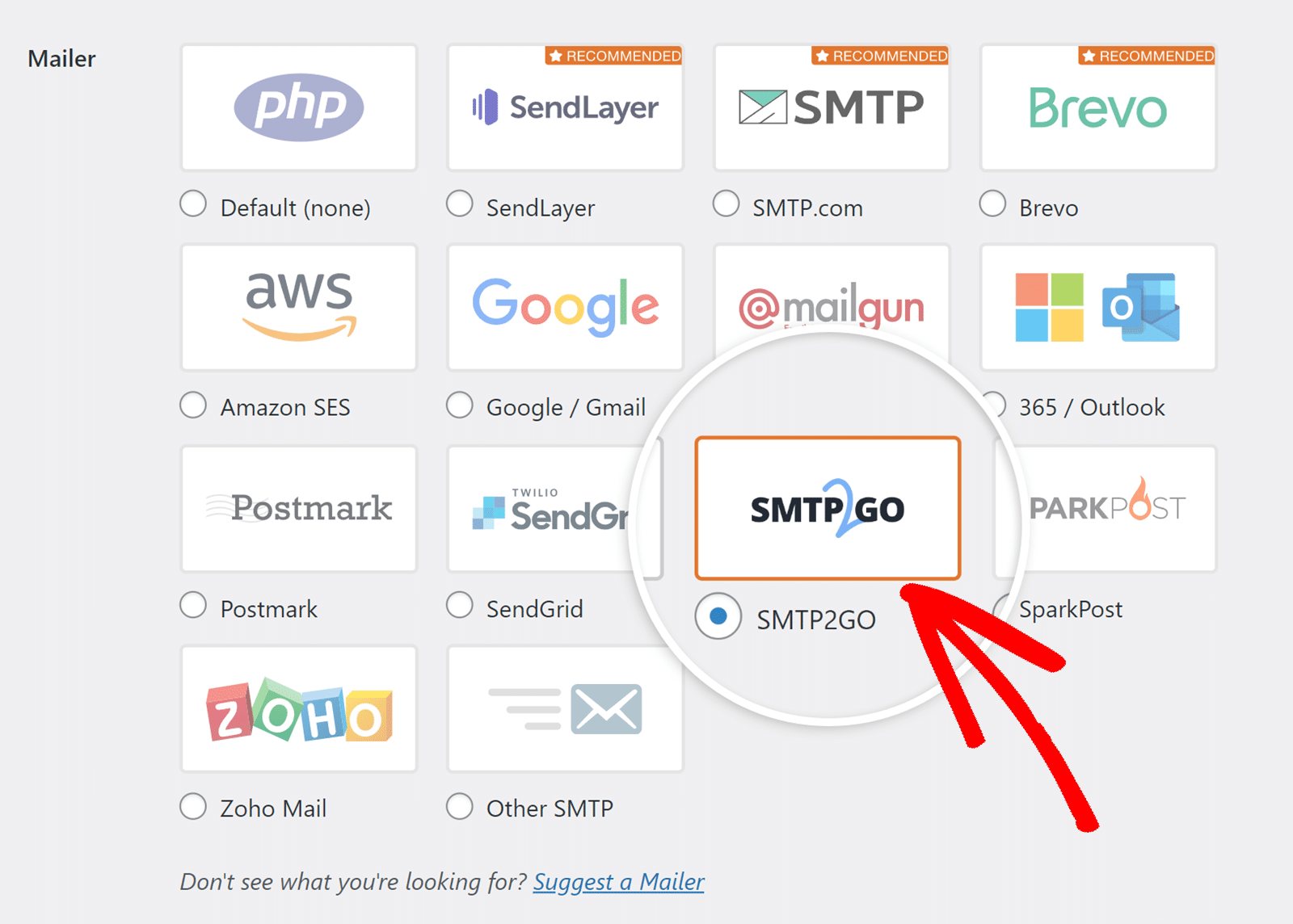
API Key
Selecting your mailer will reveal additional settings specific to SMTP2GO. First, you’ll need to locate and enter your API key.
Go back to the browser tab or window where your SMTP2GO account is open. From the left sidebar, go to Sending » API Keys.
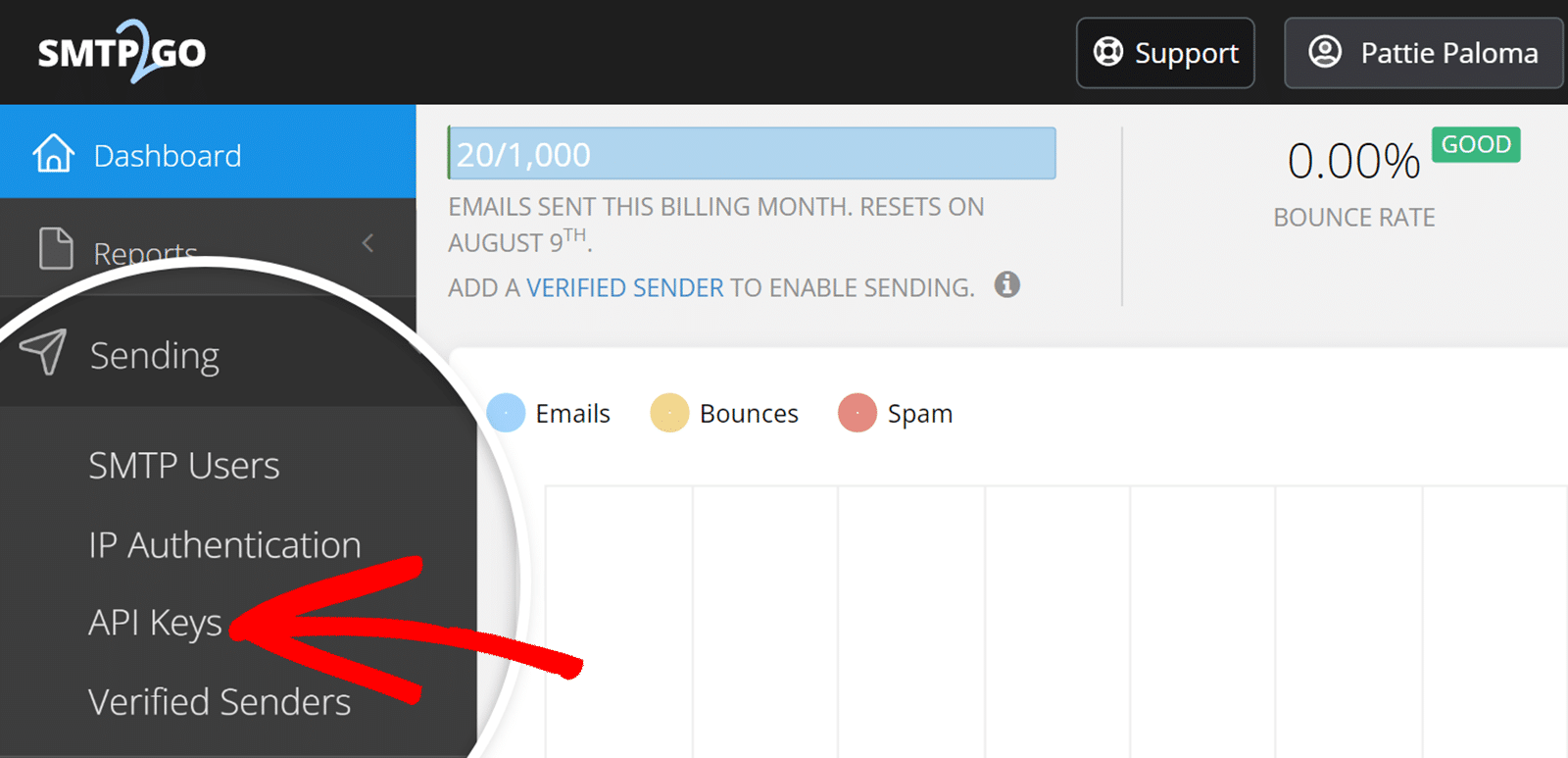
On the API Keys page, you’ll see a list of your existing API keys if you have any. To create a new key, click the Add API Key button in the top right corner.
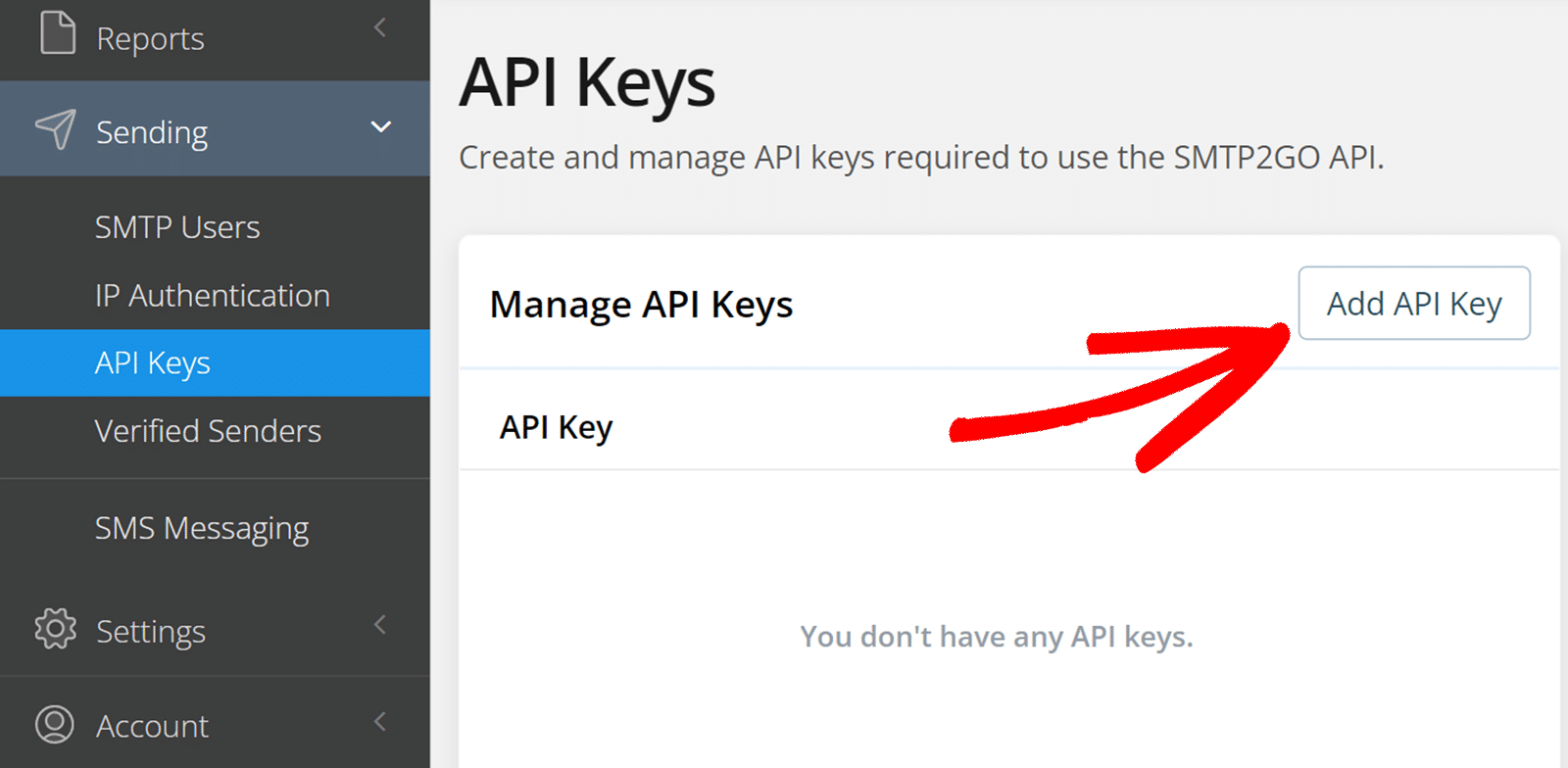
A popup window will appear with several options. The API Key field will be automatically populated with a generated key. In the Description field, enter a name to help you remember what this key is for. For the Rate Limit, you can leave this as Unlimited and check the Use default box unless you want to set a specific limit.
When you’re ready, click the Save button to create your new API key.
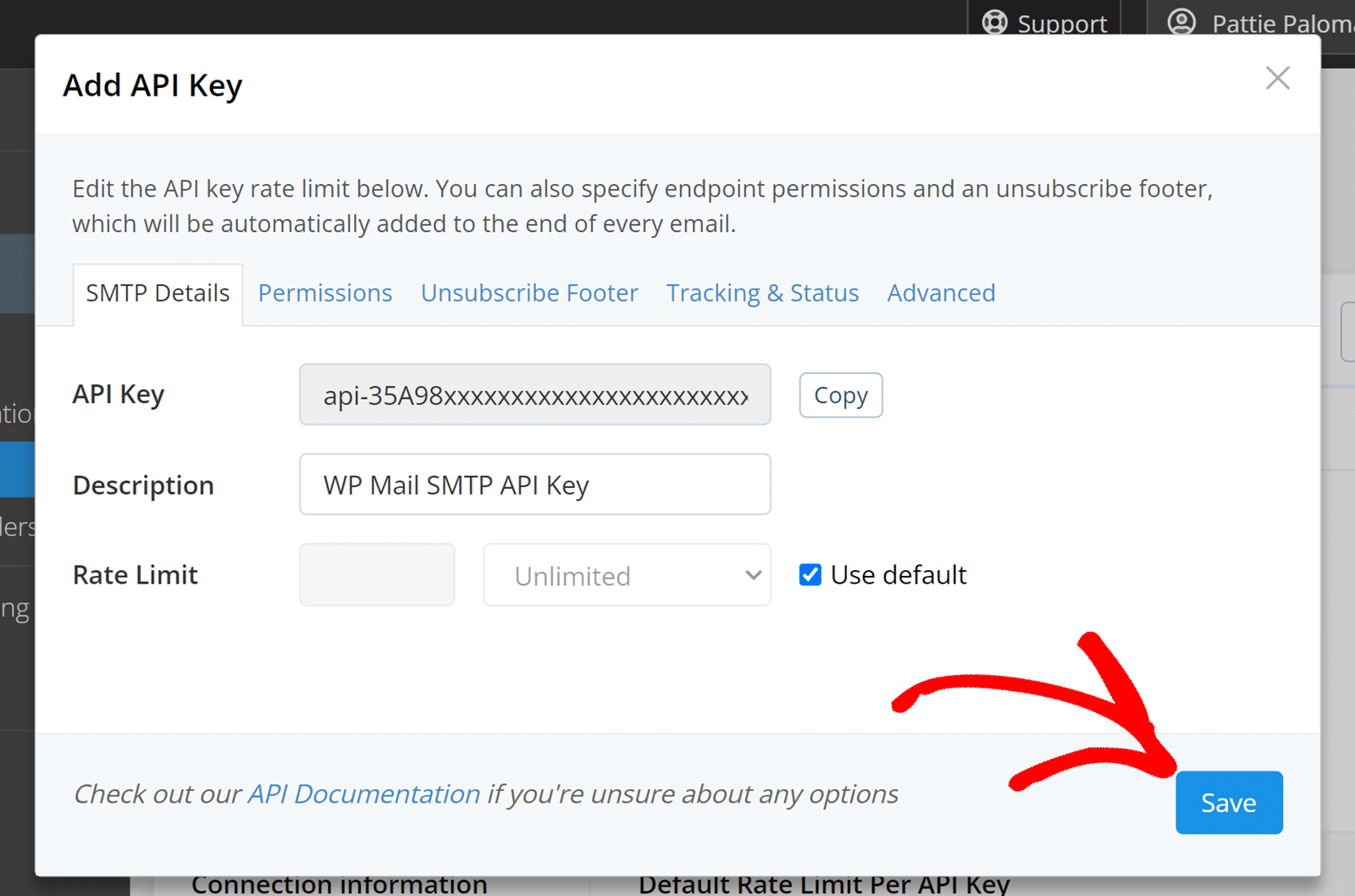
Make sure to copy the API key after saving as you’ll need this key to configure WP Mail SMTP in the next steps.
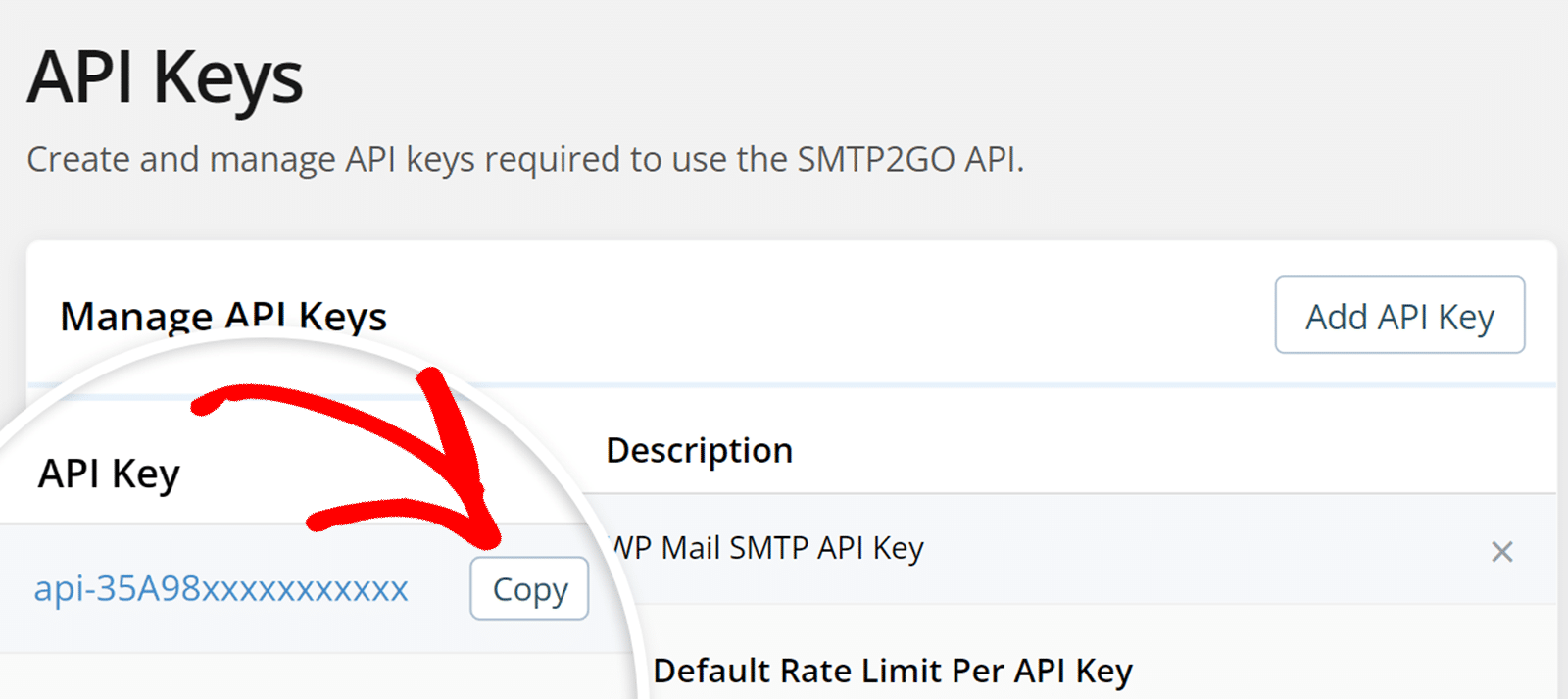
After copying the API key, return to your WP Mail SMTP settings and paste it into the API Key field.

Backup Connection
Setting up a Backup Connection is optional and isn’t required to complete your SMTP2GO mailer setup. However, to further improve email deliverability, we recommend configuring an additional connection to serve as a backup in case your Primary Connection fails.
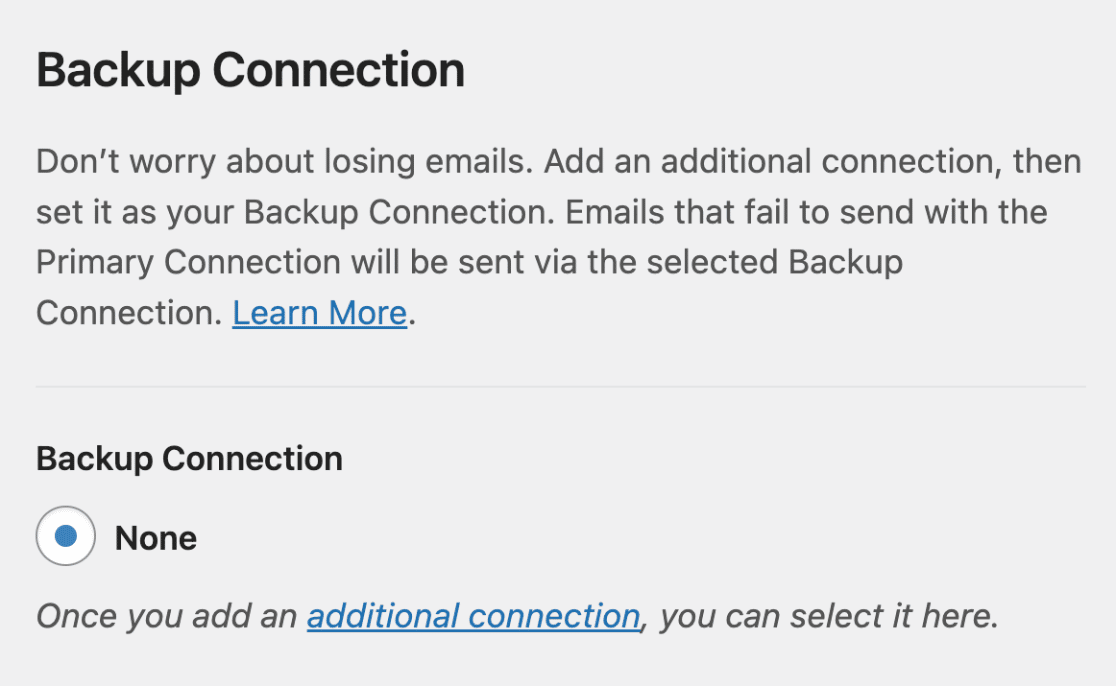
Once you’ve configured your mailer, be sure to click the Save Settings button.
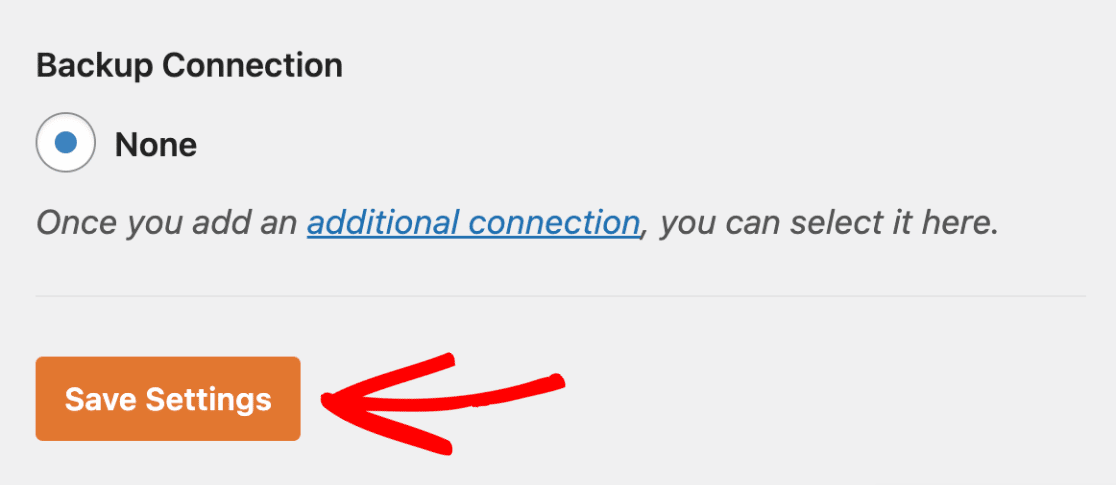
Sending a Test Email
Now that your SMTP2GO setup is complete, it’s important to send a test email to ensure that everything is working properly. To do so, go to WP Mail SMTP » Tools and open the Email Test tab.
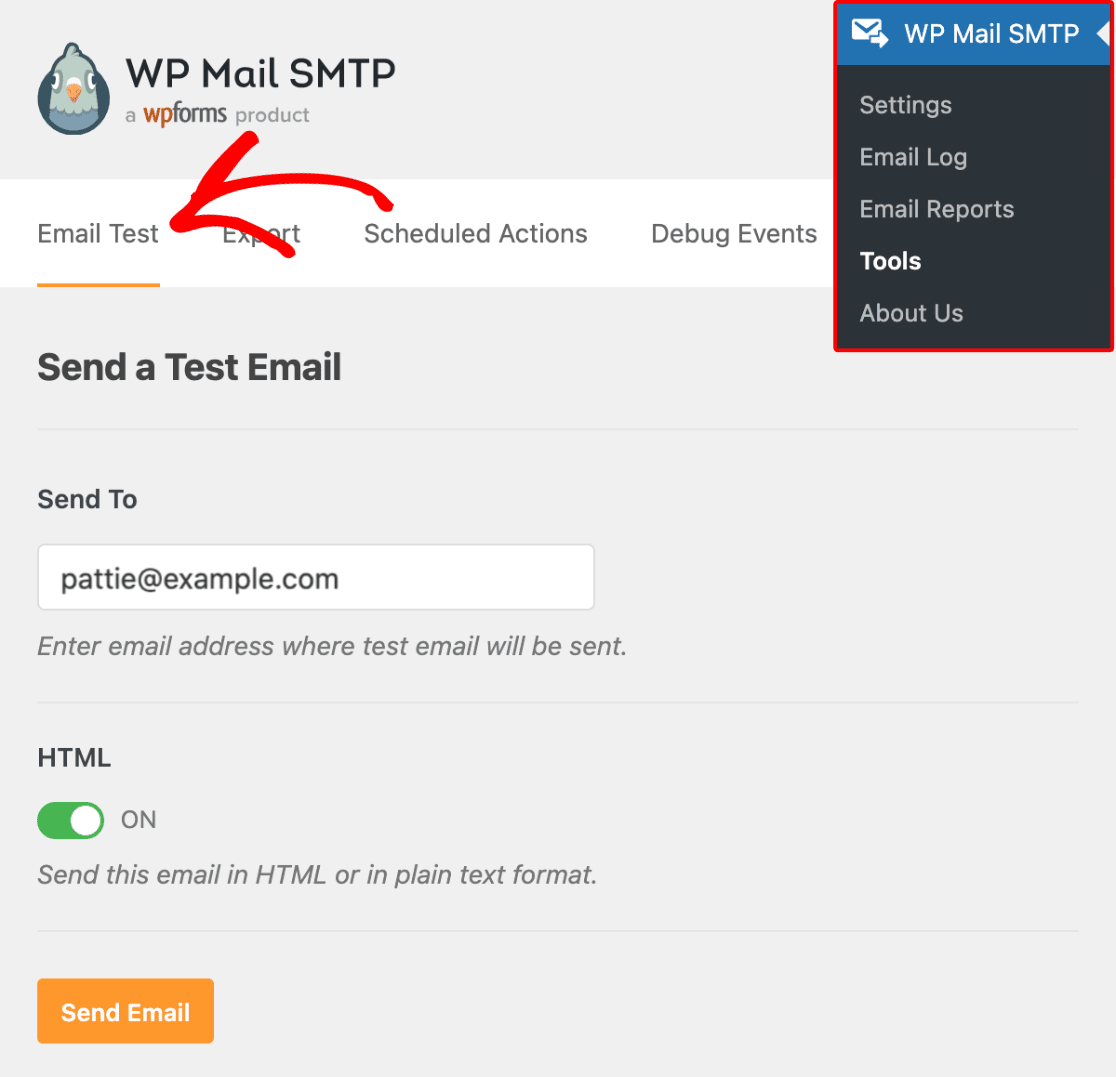
Here, you can enter any email address that you have access to (the default will be the site’s admin email). Unless you’re sure you’ll only be sending plain text emails from your site, we recommend leaving the HTML setting ON.
Next, click the Send Email button to send your test email.
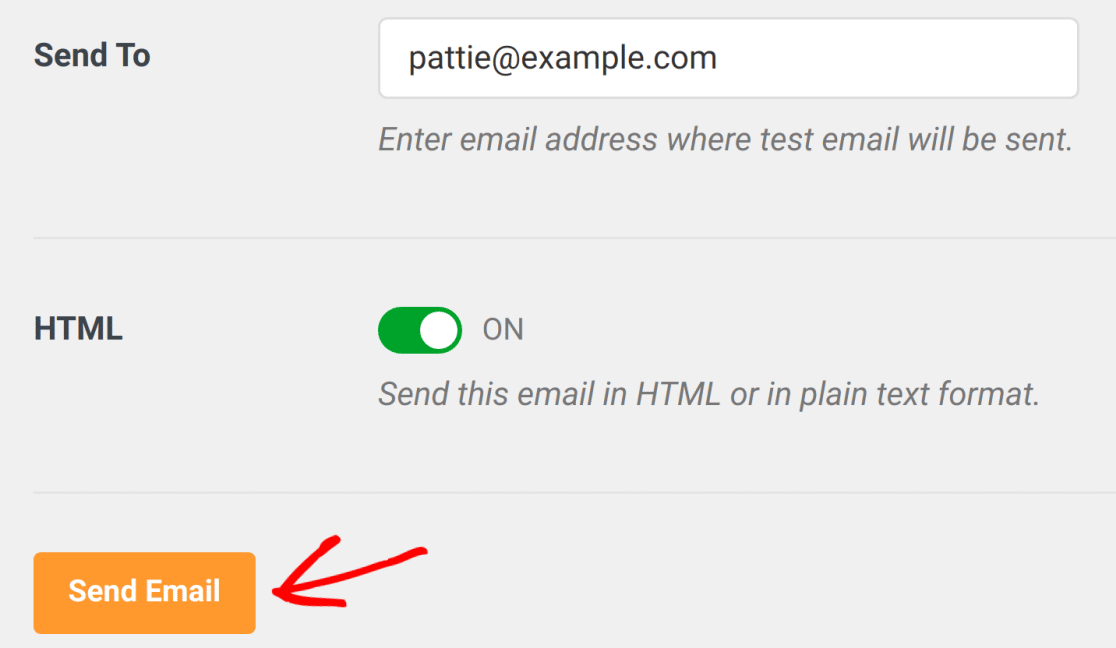
After sending the email, you should see a success message.

If you check the inbox for the email address you entered, you should have received the email for this test.
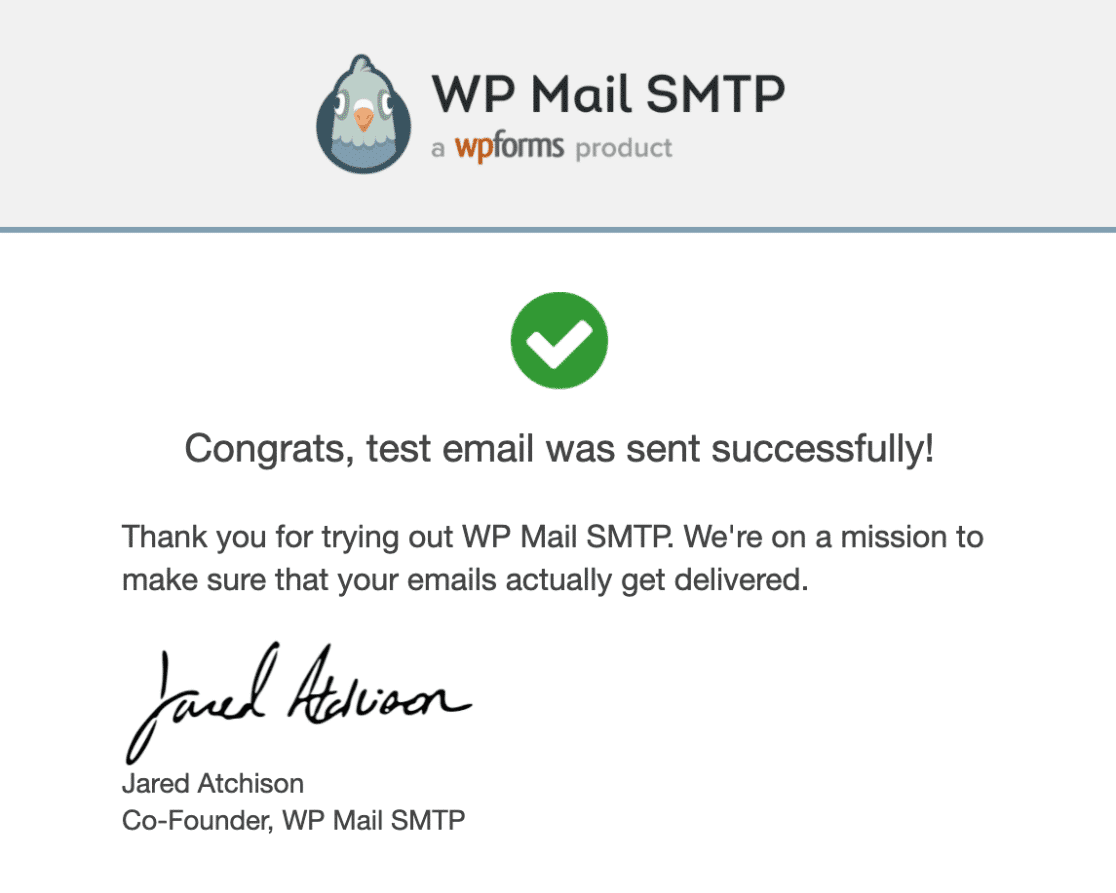
That’s it! You’ve successfully set up SMTP2GO with WP Mail SMTP. Your WordPress site should now be able to send emails more reliably.
Next, would you like to keep track of all the emails sent from your WordPress site? Be sure to check out our guide on setting up email logging to maintain a record of all outgoing emails from your site.
